Hypernovas showing past
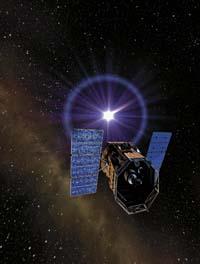
Some use the name hypernova to designate the strongest explosions astronomers have detected. It is the logical continuation of the succession of names of explosions: the supernovae are stronger than the weddings of novas, so the stronger they should be called hypernovas. Others are called gamma ray bursts and the term cosmic explosion is also used. Everyone has the same meaning. Astronomers detect these explosions three or four times a day.
They don't know what they are. And they don't know where to look for explosions, but they know that these explosions are characterized by very high energy radiation: gamma rays.
Surprise March
They are difficult to detect and require quick work if they want to study explosion radiation. They are usually not seen. They are very fragile and appear in a very small space; if we divide the Moon into a hundred parts, a hypernova reaches the maximum size of one of them. Large telescopes are needed for detection. But in March, in the constellation of Itzaina, it was a way of seeing at first sight: GRB 080319B.
Astronomers began to work quickly. In the team was Javier Gorosabel of the Institute of Astrophysics of Andalusia: "It was spectacular. He was at Easter and from a trip he arrived in Granada. We have a network, a NASA satellite is in orbit in search of this type of explosions, called Swift, and when it detects any, it sends its coordinates to the network we have on Earth. Ten seconds later came the coordinates of the explosion to the mobile phone."
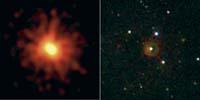
In those moments astronomers have to leave what they have in their hands and run to collect data from the explosion. In fact, they work as doctors on duty. "It doesn't matter if it's night or if it's Saturday. We have to come to work," says Gorosábel.
Once the call is received, they start up a new network, the network of telescopes. They call, with absolute priority, the observatories to put the telescopes looking at these coordinates.
All the hypernovae that study behave in the same way, but in this case it was special, as enough light came to Earth to see it at a glance.
Astronomers calculated that the explosion had been seen for forty seconds. Maybe no one saw it, but the telescopes saw it. They got a very powerful signal, much stronger than they normally receive, which brought great advantages to astronomers.
They could collect many photons. Very few photons are received from the usual weak signals and research is often very limited. But from the March hypernova signal they could collect millions of photons. Thanks to this, the research was carried out in many wavelengths.
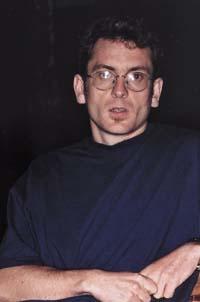
In fact, gamma rays from space do not reach the earth's surface, as the atmosphere is a great obstacle to this. It is not transparent for those rays. Therefore they should use satellites. But the signals that launch the satellite call system are gamma rays, but telescopes that activate Earth astronomers receive no gamma-ray radiation, but infrared rays and visual waves. In the case of the GRB 080319B hypernova, the techniques used were even more numerous. In addition to spectroscopies of different wavelengths, for example, they were able to conduct polarization studies.
Seeking explanations
One of the objectives of all these research is to know what hypernovas are and understand why they produce them. There are several theories and the work of the Gorosábel group has to do with one of them.
Surely, millions of years ago there were giant stars that now do not exist. Much larger than the current ones. We received the echo of the explosion of these stars. "Analyzing these explosions we are investigating how the universe was billions of years ago," says Gorosábel. "The explosion of the existing giant stars currently generates supernovae, but, according to one hypothesis, the explosions of giant stars of a billion years ago were hypernovae, because they were stars much larger than the current giants."
Hypernovae were stronger than supernovae and also had other differences. For example, the explosion emission of hypernovae was not an isotrope, that is, they did not propagate in the same way in all directions; most of the radiation was emitted in one direction, like the light of the headlights. "If this is true, we only see those who emitted radiation in our direction. Therefore, we believe that the universe is full of hypernovae, but that we only see a few."
From these supposed characteristics of hypernovae, astronomers calculate in advance how the giant stars that produced hypernovas should be. It is estimated that in order to exist (be stable and durable) they had to have few metals in the atmosphere.
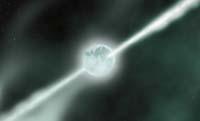
All metals present on Earth have been produced in stars, including those of human origin (bones, teeth, blood hemoglobin iron, etc. ). But in the old universe almost everything was hydrogen and helium. There was some lithium and beryllium, but almost nothing else. The other elements have been created over time within the stars. Therefore, when the ancient giant stars exploded, they did not open metals in space.
"The universe was very light at that time. Today, however, in our galaxy there are many metals, for example. But for stars like the giants of that principle it is not viable to have a large mass. And vice versa: for the same reason we know that the explosions of current stars cannot cause a hypernova. In the end we will not find hypernovas around us. It must be sought far away, that is, in explosions of a long time ago."
More than provenance
Gorosábel sees two faces in the hypernova research they studied in March. On the one hand, research is very spectacular. When that explosion occurred, the age of the universe was half our age. The Earth was not made, neither the Sun, nor perhaps the galaxy. And that means they have somehow seen a thing that is very old, without using any instrument. "It is very spectacular and at the same time media".
But, on the other hand, it has very strong scientific implications. Only the light of the explosion is being investigated, but that light has been traveling through the universe for billions of years. Therefore, all the material that goes from the place of the explosion to the place where we are has transformed the light, adding spectral lines. And with spectrum you can investigate how the chemical composition of the universe has changed over time. Finally, spectroscopy of this light is used as a probe. Not only do they see an ancient point in the history of the universe, but their subsequent evolution.
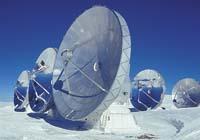
The Granada team used a telescope in Strasbourg: Interferometer Plateau de Bure. It is not a simple telescope, but observes millimeter waves, especially microwaves. "It's a difficult observation, but we bet very hard to investigate that wavelength," explains Gorosábel. "We used the telescope there, where we have approved a project. The result was that we detected photons in millimeter waves, which is very rare."
This has brought very important information, as theoretical models announced that different photons of that wavelength would be received. Therefore, because the measurements of the Granada group were very precise, astronomers have been able to discard some theoretical models for the benefit of others.
The work was published in the journal Nature on 11 September. The publication in the journal Nature is something special for those of the Gorosábel group, which normally publishes in astrophysics journals. But the impact of this research has been very high. Nature and Science, two of the leading science journals, publish relevant research in many fields of science. In this case, the article that gives the results of the March hypernova study was chosen. In addition to space, this hypernova has also shone in the best magazines.







